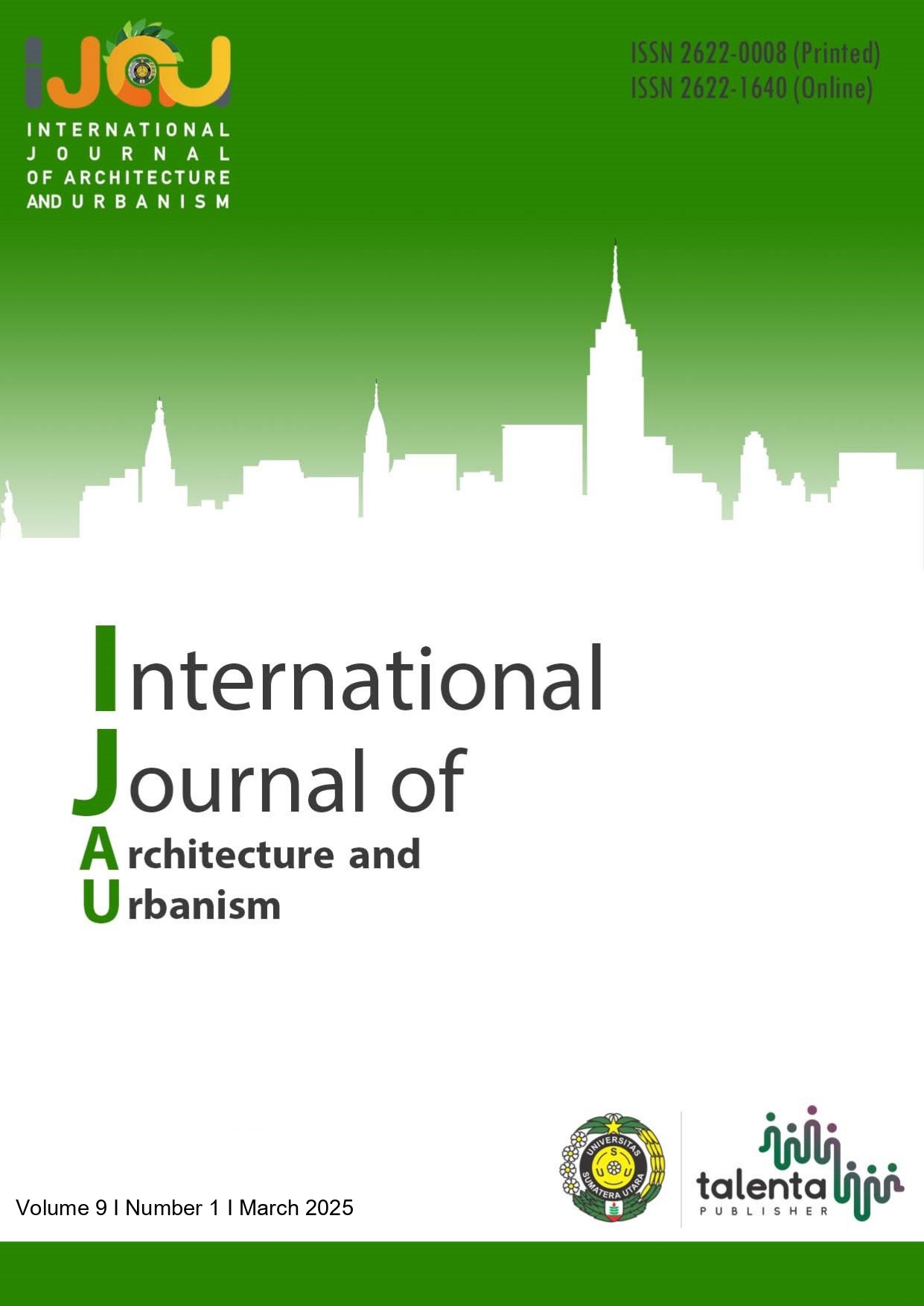The Influence of Vertical Housing Development on the Spatial Structure in Medan Petisah District
DOI:
https://doi.org/10.32734/ijau.v9i1.18857Abstract
Residential land is becoming less available as Medan city centers continue to
grow. As a result, land and house values have skyrocketed. In addition, the
increasing number of city dwellers has made it more difficult to supply the
demand for housing. One way to solve this problem is to build vertikal
buildings that provide vertikal hunian that can satisfy the needs of the local
populace. Perimahan vertikal may be a necessary and practical measure for the
general public who wish to interact with workplaces, public spaces,
educational institutions, and other activities.Vertical buildings are buildings
that have a perpendicular shape and arrangement from bottom to top. Low-rise
buildings have three or four layers of floors or a height of + 10 meters, while
high-rise buildings have more than four layers of floors and a height of more
than 10 meters. Vertical buildings or multi-storey buildings have several
influences, including land efficiency. Vertical use of space can increase land
efficiency. House prices. Demand for space. Multi-storey buildings are built to
meet the high demand for space in the area. Multi-storey buildings are built
because of limited expensive land in urban areas.The demand for apartments
becomes a wise investment when the population of urban areas continues to
expand but there is a lack of equivalent urban land for housing. With its large
capacity, vertical housing may produce green open space in a vertical setting.
Downloads
Downloads
Published
How to Cite
Issue
Section
License
Copyright (c) 2025 International Journal of Architecture and Urbanism

This work is licensed under a Creative Commons Attribution-ShareAlike 4.0 International License.











.png)





